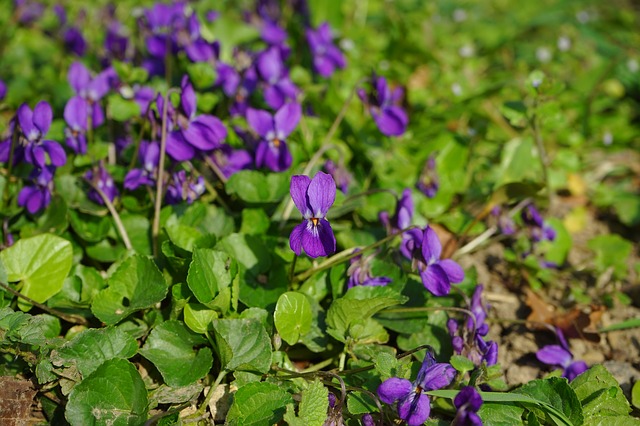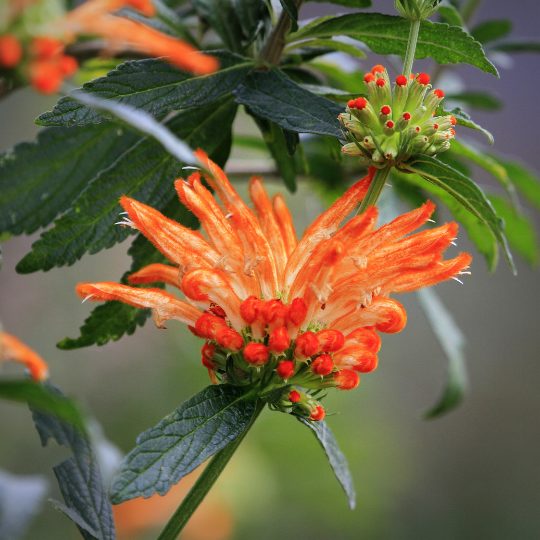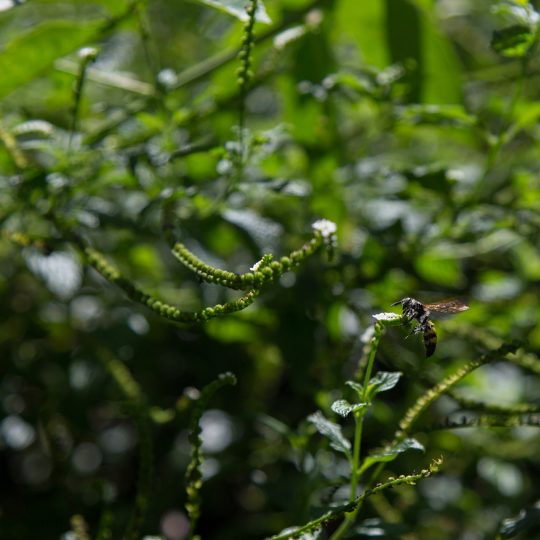-
Violet
March – Violet Latin name: Viola odorata, Viola affinis, Viola sororia, Viola tricolor, (and related species) – Family: Violaceae Common name: Violet, sweet violet, common blue violet, common wood violet, heartsease Usage: There are anywhere between 525 to 600 species within the Viola genus. Identification of species can be challenging, but according to many sources this is not of great importance, so long as you are positive on the genus – Viola. This beloved garden plant not only delights us with the beautiful purple flowers of its namesake, but also offers us sweet, cooling, anti-inflammatory medicine. The leaf and flower are both utilized for cooling hot…
-
Spearmint
Latin name: Mentha spicata (aka M. viridis or M. sativa) Family: Lamiaceae Common name: Spearmint, garden mint Usage: There are hundreds of varieties of cultivars within the mint family, many of which are used for their pleasant taste and medicinal value. One such variety is spearmint; utilized for its stimulant, carminative, antimicrobial and antispasmodic properties, with a long history of use in soothing digestive upset (nausea, gas, bloating). Steven Foster states, “Spearmint…has a much longer history of medicinal use than peppermint. It was so commonly grown and used that it was rarely described in herbals; it is known to have been cultivated in every convent garden in Europe by the…
-
Dagga
Latin name: Leonotis nepetifolia Family: LamiaceaeCommon names: Dagga, Klip dagga, Lion’s ear, Shandilay Growth: Erect, loosely branched annual that can get 8 ft tall. The stems are starkly square and leaves are smooth, with toothed margins, and oppositely arranged. The flowers are inside ball like clusters, 2-4 in, circling the stem. “The tubular flowers that peek out of the spiny heads are orange and furry, like a lion’s ear, so they say.” (1) Native to subtropical Africa, Leonotis does very well in our Central Florida climate*. It has a sister, Leonotis leonurus, that looks very similar and is also heavily planted in Central Florida gardens. L. leonurus has much fuller…
-
Scorpion Tail
Latin name: Heliotropium angiospermum, Heliotropiaceae Common names: Scorpion-Tail, Heliotrope Growth: About 2 feet in height, native to the Central East Coast of Florida, and South Florida, as well as the Caribbean and Central America. In Central Florida Scorpion-Tail is a nice herbaceous garden plant, rarely becoming weedy. The scorpion most likely to be found with Heliotropium angiospermum is Centruroides gracilis. Preparation: Cuba: Dried powder of leaves poured over a moistened burn; Dominican Republic & Haiti: decoction of leaves on sores and cleaning baby’s skin at birth. In the Bahamas and Virgin Islands this plant is sometimes referred to as Eyebright, or Bright-Eye Bush, lending some information to its historical medicinal uses.…
-
Yarrow
Achillea millefolium Latin name: Achillea millefolium Family: Asteraceae Common names: Yarrow, Milfoil Growth: In Central Florida can be used as a ground cover, the bipinnate leaves grow low to the ground and appear almost fern like, differing from their growth habit in almost every other location. The composite flowers are showy and require partial to full sun, which shortens the life of the shade loving leaves. The white variety is the only one we use for medicine; you’ll find lovely pink, yellow, orange, and all other colors available at garden centers. Preparation: tea, tincture, potherb, spice, infused oil, salve. Historically used as a leaf vegetable, the young leaves are said…
-
In Memoriam: Dr. James Duke (1929-2017)
written by Emily Ruff Dr. James A. Duke, a devoted ethnobotanist and champion of the green world, passed away December 10 2017 at the age of 88. He is survived by his wife Peggy, a botanical illustrator with whom he collaborated on many of his books. He is also survived by his two children, many grandchildren, and a countless assortment of herbalists who count Jim among their elders. The list of accolades one could recount about Jim’s life is without end, and many articles have paid tribute to his vast contribution to the botanical academy during his life. He was a prolific author, well known for his 1997 bestseller, The Green…
-
Spanish Moss
Latin Name: Tillandsia usneoides Family: Bromeliaceae Spanish moss is best known for its stunning accent to a wooded landscape, but it is neither moss, nor Spanish. Its species name “usneoides” means that it has an appearance like moss – though is not actually a moss, but rather an epiphytic bromeliad, with long threadlike festoons that can grow several feet in length off of tree limbs. It’s genus name is a nod to physician Elias Tillands, who was so afraid of water that he was known to walk several extra miles around a lake rather than take a boat a few hundred feet across. Contrary to popular belief, Spanish moss is not a parasite and does not actually feed…
-
Herbal Books: Staff Picks!
A common indulgence amongst all herbalists is none other than herbal books. That insatiable desire to read everything about all the things is real and endless. For some, that’s the initial knowing that herbalism is the path they should should dedicate themselves to. They feel this incredible, almost demanding, urge to sit with herbal information via their most trusted resources. Below our staff shares their most trusted books that have influenced their herbal journey. Chris Flocken, Bookkeeper Extraordinaire – “The Desert Year” by Joseph Wood Krutch “The flora, the fauna, the topography, the atmospheric conditions of the Sonoran Desert are among my oldest and dearest friends. The valley formed by…
-
Feverfew
Latin name: Tanacetum parthenium Family: Asteraceae Common names: feverfew Feverfew has a long history in traditional and folk medicine especially used by the Greeks and Europeans. Nicolas Culpepper is the most famous of herbalist that worked with and documented Feverfew. He says that “Venus commands this herb, and has commended it to succour her sisters (women), to be a general strengthener of their wombs…” Feverfew has a long history of supporting women and their reproductive systems. For an advanced and thorough review, head on over to the US National Library of Medicine to read a systematic review. If you’re like me and are curious of magickal ways to practice with feverfew, check…
-
Reclaiming the Practice of Self Care
At Florida School of Holistic Living, self care is a foundational component to our core curriculum. The core curriculum is indeed an elaborate herbalist training, but we have to care for ourselves if we’re going to be caring for others. As herbalists, we know it requires an immense amount of energy to hold space for others in need of healing. It’s uplifting to see the conversation of self care appear in the media. Publications like NPR and Girlboss are posting articles about self care which tells us large audiences are ready to receive the information (at least according to their market research). Slowly but surely, our society is becoming more…




